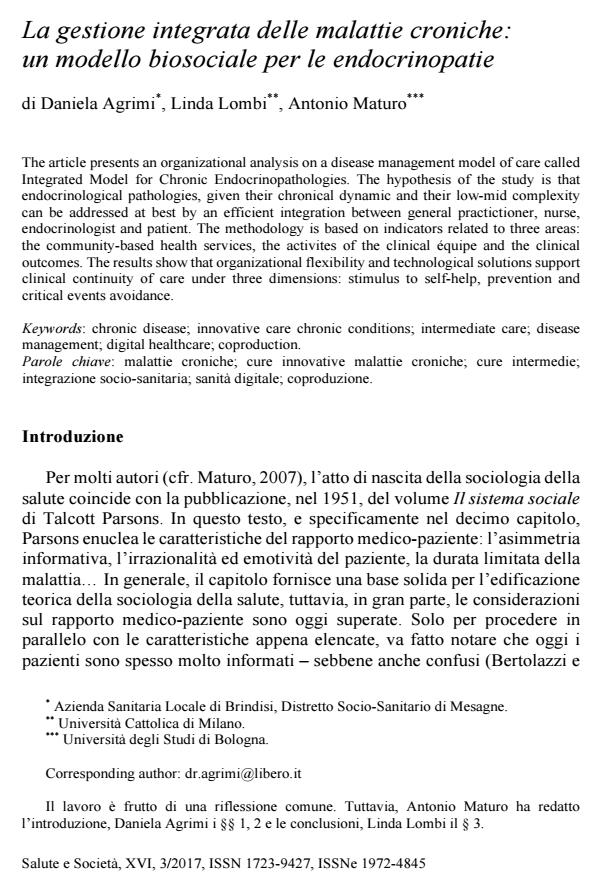La gestione integrata delle malattie croniche: un modello biosociale per le endocrinopatie
Journal title SALUTE E SOCIETÀ
Author/s Daniela Agrimi, Linda Lombi, Antonio Maturo
Publishing Year 2017 Issue 2017/3
Language Italian Pages 17 P. 167-183 File size 233 KB
DOI 10.3280/SES2017-003013
DOI is like a bar code for intellectual property: to have more infomation
click here
Below, you can see the article first page
If you want to buy this article in PDF format, you can do it, following the instructions to buy download credits

FrancoAngeli is member of Publishers International Linking Association, Inc (PILA), a not-for-profit association which run the CrossRef service enabling links to and from online scholarly content.
The article presents an organizational analysis on a disease management model of care called Integrated Model for Chronic Endocrinopathologies. The hypothesis of the study is that endocrinological pathologies, given their chronical dynamic and their low-mid complexity can be addressed at best by an efficient integration between general practictioner, nurse, endocrinologist and patient. The methodology is based on indicators related to three areas: the community-based health services, the activites of the clinical équipe and the clinical outcomes. The results show that organizational flexibility and technological solutions support clinical continuity of care under three dimensions: stimulus to self-help, prevention and critical events avoidance.
Keywords: Chronic disease; innovative care chronic conditions; intermediate care; disease management; digital healthcare; coproduction.
Daniela Agrimi, Linda Lombi, Antonio Maturo, La gestione integrata delle malattie croniche: un modello biosociale per le endocrinopatie in "SALUTE E SOCIETÀ" 3/2017, pp 167-183, DOI: 10.3280/SES2017-003013